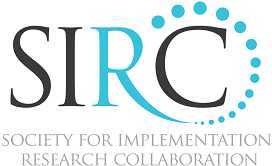Symposium 3 – October 13, 2011 (MC: Cara Lewis)
1. Active Implementation Frameworks
Presentation Slides Video of Presentation
Presenter: Dean Fixsen, PhD
Authors: Dean Fixsen, and Karen Blasé, NIRN, University of North Carolina
Abstract: Greenhalgh et al. classifies diffusion, dissemination, and implementation work into “letting it happen,” “helping it happen,” and “making it happen” categories of activities. The focus will be on making it happen via the use of active implementation components to develop staff competencies, change organizations to support EBPs and other innovations, and assure the leadership to manage the technical issues and deal with adaptive challenges and wicked problems. The focus is on producing consistently high quality staff performance in order to deliver consistently high quality outcomes. The active implementation frameworks are derived from 40 years of implementation experience, a rigorous review of the implementation evaluation literature, and extensive qualitative assessments of effective implementation teams.
2. Getting to Outcomes: Bridging Research and Practice
Presentation Slides Video of Presentation
Presenter: Deborah Fisher, MA
Author: Deborah Fisher, Vision Training Associates
Abstract: Getting To Outcomes® (GTO)* is a ten-step approach to enhance practitioner’s intervention skills while empowering them to plan, implement, evaluate, and sustain their own programs and community initiatives. Grounded in prevention research, GTO guides users through answering ten accountability questions covering needs and resources assessment, goal and outcome setting, use of best practices, determining intervention fit and organizational capacity, planning, implementation, process and outcome evaluation, use of continuous quality improvement (CQI), and sustainability.
3. Building the Link through Project Focus: A Consultation Intervention with Child Welfare Caseworkers, Brokers of Evidence-based Practices for Youth in Foster Care
Presentation Slides Video of Presentation
Prsenter: Shannon Dorsey, PhD
Authors: Shannon Dorsey, Sue Kerns, Lucy Berliner, Eric Trupin, and Kate Conover, University of Washington
Abstract: Project Focus is a broker services model designed to address the challenges in linking youth in the foster care system with evidence-based mental health services, to improve their behavioral and emotional functioning. Unmet mental health needs are associated with increased placement disruption and lower rates of adoption and reunification. However, only one-third or fewer youth in the foster care system receive mental health services, with only a portion receiving evidence-based treatments. Increasing access to effective, evidence-based services is critica, with caseworkers in the foster care system well-positioned to facilitate links with effective services due to their key gatekeeper, or service brokering role.
Four regional DCFS offices were block-randomized to Intervention or Waitlist control. Caseworkers in the Intervention offices received 6 hours of training and bi-weekly case-specific consultation, up to 8 one-hour sessions. training and consultation focused on using assessment data (e.g., CBCL) to determine primary treatment needs and evidence-based programs (EBPs) that were appropriate for identified needs and were available in the community. Results indicated that caseworkers in the Intervention group had more significant improvements over the study period regarding familiarity with evidence-based practices for children’s mental health. There was a positive trend, although not statistically significant, for more referrals of youth to evidence-based practices. Additionally, qualitative exit interviews revealed high levels of acceptability and satisfaction with the consultation. Findings are promising for targeting service brokers for implementation support and training, in attempts to increase referral to and receipt of EBP.
Communities implementing prevention programs are increasingly required by funders to evaluate their outcomes, yet are often not given the guidance or tools needed to successfully do so. Originally published by the RAND Corporation and downloaded 75,000 times (Chinman, Imm, & Wandersman 2004), GTO helps build capacity for the implementation and evaluation of high quality interventions. It incorporates traditional evaluation, empowerment evaluation, accountability, and CQI.
GTO is designed as a best practice process — prescriptive, yet flexible enough to facilitate the evaluation of any program. It has been applied in several domains including: substance abuse prevention, underage drinking prevention, teen pregnancy prevention, positive youth development, homeless veterans, treatment of substance abusing pregnant women, systems of care for child and family mental health, emergency preparedness, and coalition sustainability.
*Getting To Outcomes and GTO are registered and owned by the U. of South Carolina and RAND
